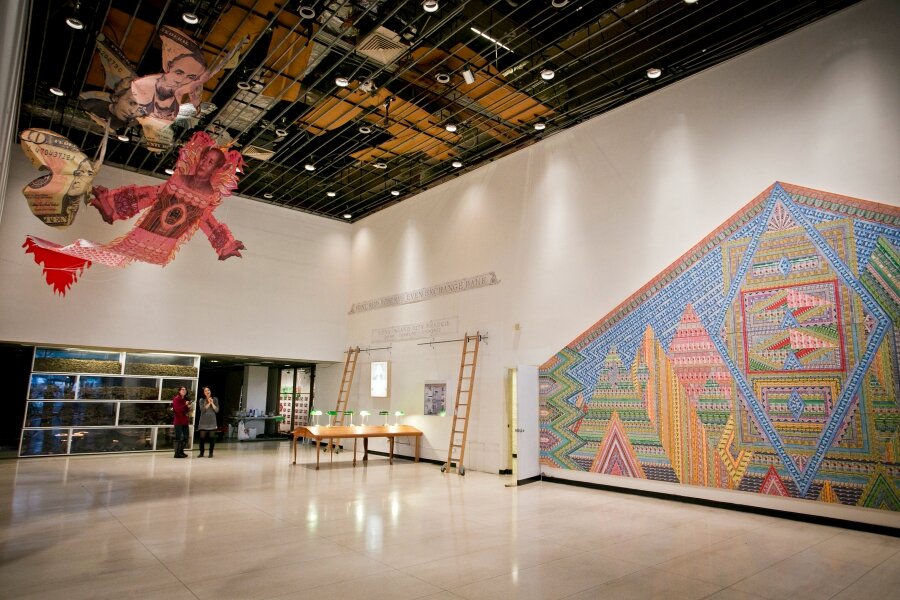Nonprofit group fills empty New York spaces with art
| NEW YORK
No Longer Empty (NLE) is a nonprofit arts group that seeks out empty and underutilized spaces for art installations throughout New York City. But it does more than transform empty storefronts into temporary exhibition space. All its projects relate to the building's history and its neighborhood.
The group's holistic approach also involves community participation and discussion months before it comes up with a theme for its site-specific exhibitions.
In most cases, NLE researches and finds the space, but sometimes it's invited to produce an installation for a group, like the current "Bring in the Reality" show with pieces from its earlier exhibitions for the Nathan Cummings Foundation that reflects the foundation's focus on social and economic justice.
Last summer, it presented an exhibition about housing and community at Broadway Housing Communities' new — but not yet finished — David Adjaye-designed affordable housing complex in Harlem's Sugar Hill.
The nonprofit got its start in 2009 with an exhibition that responded to the city's financial crisis.
"Lehman Brothers and everything was collapsing, so there were massive empty spaces around the city," says its founder and chief curator, Manon Slome. She was offered a free site at a former fish-and-tackle store adjacent to the Chelsea Hotel that had remnants of marine-like imagery. Artists responded by linking the maritime theme to the notion of the drowning economy.
Ms. Slome was then offered a free space in an upmarket condominium in the evolving Meatpacking District. Because it lacked a history like the fish-and-tackle store, "we looked at what it meant to be in a neighborhood in transition" with an exhibition titled "Reflecting Transformation."
"So this notion of site-specificity was built in right at the beginning," she says. "Responding to a site became the center of the way we were curating the exhibition and eventually the programming" — like a 2012-2013 multimedia installation that explored the value of currency, commodity, and debt at the art deco Clock Tower in Long Island City, Queens, a former bank building vacant for 25 years and declared a landmark this year.
This summer it occupied three floors of the Old Bronx Borough Courthouse that's been abandoned for 37 years. Twenty-three artists created works that responded to the history of the Beaux Arts building and its role in the neighborhood.
Artist Teresa Diehl says the site became "like a community center."
NLE makes "art accessible to the community, and they engage the artists at every level," says the Miami-based artist ,who is readying another work for NLE that will open at the South Street Seaport this month.
The organization has two staff curators. Guest curators are invited as needed for exhibitions, all of which are free and feature local, international, emerging, and established artists.
Each installation begins with extensive research. Programming in collaboration with community organizations extends the reach of the exhibitions. For its Old Bronx Borough Courthouse show, NLE asked the district attorney's office to re-enact a trial with the audience as the jury.
To further bolster the narrative of the neighborhood for visitors, cultural maps of other offerings in the area are printed.
"It was a great way for me to create an artistic project that relates to the community. ... Art should be for the community, to think about life, to think about change, to engage with their own realities," says Kameelah Janon Rasheed, one of 22 artists in the Sugar Hill exhibition, whose project of personal and found objects reimagined where she lived until her family became homeless when she was 12.
Ellen Baxter, founder of Broadway Housing Communities, says NLE "is remarkably serious about respecting the participation of local leaders."
"They helped curate the gathering of other cultural organizations. ... On the opening and closing nights there was a line that went down the block."
• Visit http://nolongerempty.org.





